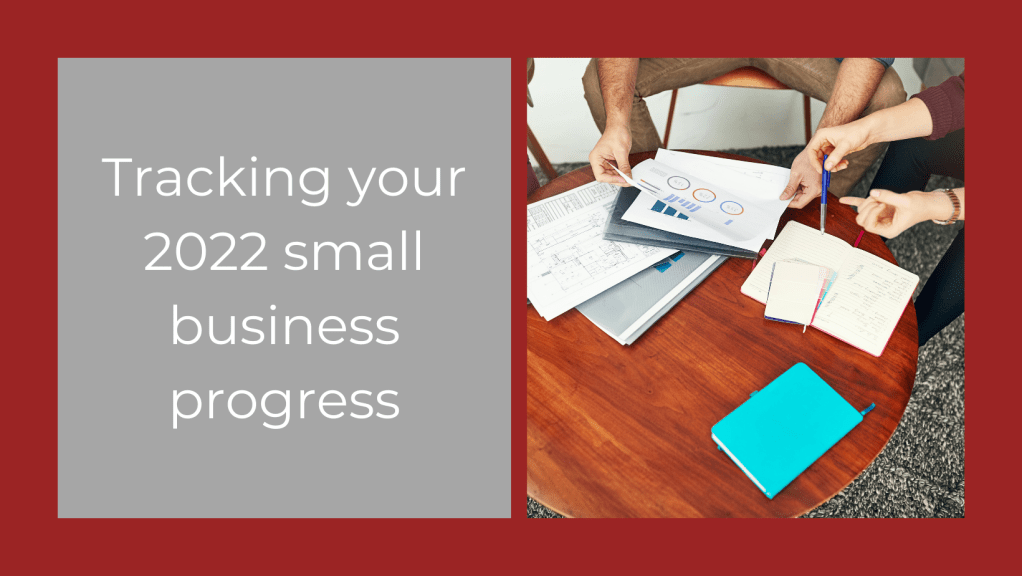It doesn’t matter if you’re a big company, or a small business, we all must think about what our customers want and how we get them from that first stage, where they’ve just heard about your business, to the purchase and advocacy stage.
This is called the customer journey, and by making a journey map, you can plan your customers’ route, ensuring you meet their needs along the way. Does this sound complicated? Are you glazing over? It’s not as complicated as it sounds.
Knowing what your customers want
The first stage starts before your customers even know you exist. This is the part where you do your research to find out what people want and need from a business like yours…and knowing your ideal customer.
Let’s take sports trainers as an example. You could say that your ideal market is everyone, but it’s important to niche down to a narrower market in order for you to be able to target them with your content. So, are you going to concentrate on comfort, or go for pure fashion? Are you going to target younger people or older people? What colours do you want to go for? What style? So, before you can look at the customer journey, you need to know exactly who your customers are. You can do this by looking at your current customers, look at the insights on your social media pages and the analytics from your website.
Build a few buyer personas, so you know what your customers like, what they want and what makes them buy.
Stages of the customer journey
Stage 1 – Awareness
This is where your customers first hear about your business or have their first experience of what you offer. They see this largely through your marketing. It might be they google a product of yours and it appears on a search engine like Google. Google could point them to your website or online shop, it might show them your business profile on Google, or show your social media pages.
They may see a physical flyer, pick up your business card at an event, see an advert in a local magazine, or it might be someone you get talking to, who asks what you do. They also may hear about you through word of mouth from their friends or relatives.
Where and how you market your business will depend on their age and lifestyle, so that’s why knowing your target market is so important. If you are marketing to an older audience, for example, some of your marketing would probably be through Facebook. But if your audience is much younger, you would use as many social media channels as you can, especially TikTok, Instagram and YouTube. The younger generation spend most of their free time online, so that’s where you’re most likely to find them.
Typically, people must be exposed to your business at least eight times before they start to recognise it, so it’s not a quick process.
Stage 2 – Consideration
This is where your potential customers are looking at what you have to offer and are thinking about whether your products or services fit the bill for them. Do you solve a problem they have and are you the person to go with over others they’ve seen?
Basically, are you worth investing in?
Your customer reviews and testimonials are what makes a difference in this stage. They want to see social proof that you’re as good as they’ve heard you are.
This is also where blogs come into their own – articles that potential customers can read that give proof that you know your stuff. The same applies to email newsletters. They may even sign up to your newsletter months before they become a customer.
The other thing that influences potential buyers at this stage is what they can see. Good images of your products, with good descriptions, telling them the benefits of your products – how they help, what they do and how potential customers can’t live without it! How will your product or service make their lives better?
So, good images and video on your website, online shop and social media are crucial.
Stage 3 – Purchase
They’ve liked what they’ve seen, are convinced you are the right person to buy from and they go to your website or online shop to buy.
At this stage, it’s vital that your website or shop is easy to navigate, that it’s easy to pay for what they want, and everything is crystal clear as to what they can expect from you.
If they ask questions at this stage, getting a timely answer is an absolute must. Customer service is also an important part of the customer experience and their journey and can make the difference between getting that actual purchase or them going away and never returning.
Stage 4 – Service
Service is about going that extra mile for your customers. That age-old adage that says the customer is always right must come into play here, whether you agree or not. If your customer service hits the mark, you won’t go far wrong.
Things like a quick and efficient delivery service, securely and nicely packaged. You can’t always control the postal service and delivery times, but so long as you get an order out quickly and stay connected with your customer, this will go a long way to enhancing their customer experience.
If something does go wrong, don’t try, and hide it – be up front with your customer and admit to any mistakes and take immediate steps to rectify it. This is where communication is key – replying to emails, replying to complaints quickly, trying to resolve any issues to keep things running smoothly.
Similarly, if you have customers who are happy and tell you they are happy with your service, reply to them too and thank them for their comments. Always reply to every comment on your social media posts, every email you receive and reply to any message you get on social media. If you come across as genuine and friendly, and as a business who really cares and values its customers, things will go well.
Stage 5 – Loyalty
Loyalty is as it suggests – encouraging customers to be loyal to your brand and business. It’s about encouraging them to come back for more.
Gaining new customers is something we all aspire to, but retaining your existing customers is also crucial to the success of your business. So how do you keep that loyalty?
Send thank you cards with their order and maybe offer a small discount for their next order or add in a little small gift.
Introduce a loyalty scheme, with a card, so each time they buy from you, they get points. When they reach a certain number of points or have bought from you a certain number of times, they get a free gift, or a voucher valued at a certain amount that they can spend on your products or services.
Don’t ignore your customers once they have the product they’ve ordered. Leave it a couple of weeks, then message them to ask how they’re getting on with your product and how it’s working for them. Don’t be afraid to ask for a review.
Quite naturally, we don’t always think to leave a review if we’re happy with something – people typically only think about reviews if they have a bad experience. Sometimes a little prompt is all they need to leave a review on your social media page or website.
Invite them to follow you on social media, read your blogs or sign up to your newsletter.
Stage 6 – Advocacy
Advocacy – where the customer becomes your fan and tells everyone about how wonderful your products and services are. They use their experience with you and your business to shape other potential customers’ opinions. They might comment on your posts or share posts on social media.
They might talk about this amazing product they’ve bought from you to their friends and family, or they might give great stories about how your service is one of the best they’ve come across.
How customers behave at this advocacy stage is dependent on how they were treated in the other stages. Often it’s down to the overall customer experience they had with you, your brand, and your business.
And there you have it – the customer journey in seven steps. If you’d like help with any of these stages, or want help with identifying your target market, so you are hitting the ground running, give me a call or email me. I’m always happy to help.























 Facebook – The top of the pile with an estimated 1.1 billion unique monthly visitors. Facebook is a social networking site that enables people to connect with friends and family, sharing photos, videos and status updates/messages. It can be used for fun or for business. It is estimated that over 1 million small businesses use Facebook and is very popular with small business owners in France.
Facebook – The top of the pile with an estimated 1.1 billion unique monthly visitors. Facebook is a social networking site that enables people to connect with friends and family, sharing photos, videos and status updates/messages. It can be used for fun or for business. It is estimated that over 1 million small businesses use Facebook and is very popular with small business owners in France. YouTube – After Google, YouTube is the largest search engine with an estimated 1 billion unique monthly visitors. It’s where most people go to watch or share video content. It covers every single subject you can think of from popular music videos and films to Joe Bloggs down the street falling off his skateboard! Anyone can post personal videos or share content.
YouTube – After Google, YouTube is the largest search engine with an estimated 1 billion unique monthly visitors. It’s where most people go to watch or share video content. It covers every single subject you can think of from popular music videos and films to Joe Bloggs down the street falling off his skateboard! Anyone can post personal videos or share content. LinkedIn – This is a social networking site for professionals. With 255 million unique monthly visitors, LinkedIn members post a profile of themselves, very much like an extended CV. Users can promote themselves and their businesses, connect with other businesses and even apply for jobs or ask for work.
LinkedIn – This is a social networking site for professionals. With 255 million unique monthly visitors, LinkedIn members post a profile of themselves, very much like an extended CV. Users can promote themselves and their businesses, connect with other businesses and even apply for jobs or ask for work. Pinterest – This is a fairly new concept, but with 250 million unique monthly visitors, it is fast becoming popular. It’s an image-based visual platform that allows its visitors to create digital bulletin boards where businesses can pin their content. As more than half of its members are women, it’s a great place for businesses whose target audience is largely female should think about being a part of.
Pinterest – This is a fairly new concept, but with 250 million unique monthly visitors, it is fast becoming popular. It’s an image-based visual platform that allows its visitors to create digital bulletin boards where businesses can pin their content. As more than half of its members are women, it’s a great place for businesses whose target audience is largely female should think about being a part of. Google Plus + – Google Plus or Google+ is an interest based social media platform with 120 million unique monthly visitors. You can post photos and status updates on your profile or you can post to specific communities or groups. Specific communities are set up for different subjects so you can post blogs to specific themes. There’s multi-person messaging, text and video chat called Hangouts and you can run events. It’s a very versatile platform.
Google Plus + – Google Plus or Google+ is an interest based social media platform with 120 million unique monthly visitors. You can post photos and status updates on your profile or you can post to specific communities or groups. Specific communities are set up for different subjects so you can post blogs to specific themes. There’s multi-person messaging, text and video chat called Hangouts and you can run events. It’s a very versatile platform.
 Reddit – This is a little different to the other sites – it is still popular, with an estimated 85 million unique monthly visitors, but the content is voted on by the visitors to the site. It is still a social media site, more of a community where posts are identified by topics, such as technology, music, etc. Users submit links and posts that are of value are ‘upvoted’ and those that aren’t are ‘downvoted’. The voting determines where the post sits on the site – however if your post/link hits the front page, it is seen by hundreds of thousands of people – sending a huge percentage of them to the linked website!
Reddit – This is a little different to the other sites – it is still popular, with an estimated 85 million unique monthly visitors, but the content is voted on by the visitors to the site. It is still a social media site, more of a community where posts are identified by topics, such as technology, music, etc. Users submit links and posts that are of value are ‘upvoted’ and those that aren’t are ‘downvoted’. The voting determines where the post sits on the site – however if your post/link hits the front page, it is seen by hundreds of thousands of people – sending a huge percentage of them to the linked website! VK – I have to admit to not having heard of this one! VK is short for VKontakte – a social media networking site where members can add friends, gain followers and post photos. However it is a largely aimed at Eastern European visitors, particularly Russian. In fact it is the most popular site in Russia.
VK – I have to admit to not having heard of this one! VK is short for VKontakte – a social media networking site where members can add friends, gain followers and post photos. However it is a largely aimed at Eastern European visitors, particularly Russian. In fact it is the most popular site in Russia. Flickr – This is an imaging and video hosting platform. It is very popular for those wanting to share and embed photographs. With an estimated 65 million users, it is still up there with the best!
Flickr – This is an imaging and video hosting platform. It is very popular for those wanting to share and embed photographs. With an estimated 65 million users, it is still up there with the best!
 Having an online presence not only puts your business in front of a huge, global audience, it can help you get more sales and enable you to become more ‘real’ to your customers. The internet never takes a nap, gets distracted or falls asleep, so once you have your online presence, your business has the potential to be working for you 24/7. Customers can see your products and services in their own time, whenever they feel like it, so whether they work 9-5 and go online in the evening or whether they are night-shift workers and search for what they want during their break (at three in the morning), they can find you. More importantly, if you sell products and have an online store, a customer can order from you as soon as they feel the urge…they don’t have to wait for a shop to open at 9am, by which time they might have changed their mind. And they don’t have to travel to get what they want – whether you live in their neighbourhood or whether you lives hundreds of miles away, they can still buy from you.
Having an online presence not only puts your business in front of a huge, global audience, it can help you get more sales and enable you to become more ‘real’ to your customers. The internet never takes a nap, gets distracted or falls asleep, so once you have your online presence, your business has the potential to be working for you 24/7. Customers can see your products and services in their own time, whenever they feel like it, so whether they work 9-5 and go online in the evening or whether they are night-shift workers and search for what they want during their break (at three in the morning), they can find you. More importantly, if you sell products and have an online store, a customer can order from you as soon as they feel the urge…they don’t have to wait for a shop to open at 9am, by which time they might have changed their mind. And they don’t have to travel to get what they want – whether you live in their neighbourhood or whether you lives hundreds of miles away, they can still buy from you. Using Social Media is the most common way to let people know your business exists and to build your brand. Social Media networks have millions of customers passing through them every single day – some of them will be your new customers. If you run a social media campaign for your business, or publish useful and high quality content on a regular basis, you can slowly, but surely build your online reputation. I don’t mean constantly bombarding people with images of your products with the hard sell, but taking the time to tell your audience what your product or service can do for them. Solve a problem, answer a question, show them that your products or services are worth buying or using and why.
Using Social Media is the most common way to let people know your business exists and to build your brand. Social Media networks have millions of customers passing through them every single day – some of them will be your new customers. If you run a social media campaign for your business, or publish useful and high quality content on a regular basis, you can slowly, but surely build your online reputation. I don’t mean constantly bombarding people with images of your products with the hard sell, but taking the time to tell your audience what your product or service can do for them. Solve a problem, answer a question, show them that your products or services are worth buying or using and why. Once you have decided to go the social media route, you just need to decide which one or two to go for. There are loads to choose from, but here are the top 15 sites, compiled in September 2016 by eBizMBA Rank – a US company.
Once you have decided to go the social media route, you just need to decide which one or two to go for. There are loads to choose from, but here are the top 15 sites, compiled in September 2016 by eBizMBA Rank – a US company.  customers about a new product. However it is effective for small businesses to use this method to send out a monthly or quarterly newsletter. This can be written in a friendly, chatty way and is a great way to stay connected to your customers. You just need to collect email addresses of new and existing customers and, most importantly, ask them if they would like to receive your newsletter. You MUST have their permission to do this, so good to have a form they can complete online on your website to ask to subscribe. You can then use it to let them know about any special offers or discounts, inform them about new products and generally tell them a bit about your business and how it works. It’s a great way to stay in touch with customers and build customer loyalty.
customers about a new product. However it is effective for small businesses to use this method to send out a monthly or quarterly newsletter. This can be written in a friendly, chatty way and is a great way to stay connected to your customers. You just need to collect email addresses of new and existing customers and, most importantly, ask them if they would like to receive your newsletter. You MUST have their permission to do this, so good to have a form they can complete online on your website to ask to subscribe. You can then use it to let them know about any special offers or discounts, inform them about new products and generally tell them a bit about your business and how it works. It’s a great way to stay in touch with customers and build customer loyalty.
 Social Media – Facebook, Twitter, Pinterest, LinkedIn, Google + are all social media sites that can help you market your business for free. Set up an account and get going. Not only can you share details of your products and services, but you can also personalise to show your human self…what you like, what your interests are. Share articles of interest and inspirational quotes, pictures…anything that you think people will like to see.
Social Media – Facebook, Twitter, Pinterest, LinkedIn, Google + are all social media sites that can help you market your business for free. Set up an account and get going. Not only can you share details of your products and services, but you can also personalise to show your human self…what you like, what your interests are. Share articles of interest and inspirational quotes, pictures…anything that you think people will like to see. Survey your customers – Send your existing customers a survey. Ask them about the products or services they have bought from you. Ask them what they like best about your products/services and use the information you gain to improve your offering or to promote your business. At the end of the survey, ask if it is ok for you to publish any of their comments….if they say ‘yes’ you have more recommendations and possible stories. And report your survey results in a blog or an article.
Survey your customers – Send your existing customers a survey. Ask them about the products or services they have bought from you. Ask them what they like best about your products/services and use the information you gain to improve your offering or to promote your business. At the end of the survey, ask if it is ok for you to publish any of their comments….if they say ‘yes’ you have more recommendations and possible stories. And report your survey results in a blog or an article. Enter a business award competition – There’s nothing better than being able to say that you’ve won an award in a specific competition. Even if you don’t win, but are shortlisted in the top ten, it’s still something to shout about. If you do happen to win, you can advertise the fact on your social media pages, on your website, in your newsletter etc. You could also put it in your signature.
Enter a business award competition – There’s nothing better than being able to say that you’ve won an award in a specific competition. Even if you don’t win, but are shortlisted in the top ten, it’s still something to shout about. If you do happen to win, you can advertise the fact on your social media pages, on your website, in your newsletter etc. You could also put it in your signature.







 Who are they? You may want to attract new customers to build your customer base. In order to find those elusive ‘first time buyers’, you need to think about who you are trying to attract. What kind of customer does your business appeal to? Is it men, women, families, people who like sport? Think about who you need to target.
Who are they? You may want to attract new customers to build your customer base. In order to find those elusive ‘first time buyers’, you need to think about who you are trying to attract. What kind of customer does your business appeal to? Is it men, women, families, people who like sport? Think about who you need to target. You need to be seen as an expert in your field, so try and solve a problem for potential customers. Think of something that your products can do for them – this gives them a reason to try your products. It might be that you sell beauty products and you have the latest ‘big thing’ that makes wrinkles disappear! Sell your product as a solution to a problem and people will want to try it. This could be done face to face, or you could write a specific blog on a particular product or service you offer.
You need to be seen as an expert in your field, so try and solve a problem for potential customers. Think of something that your products can do for them – this gives them a reason to try your products. It might be that you sell beauty products and you have the latest ‘big thing’ that makes wrinkles disappear! Sell your product as a solution to a problem and people will want to try it. This could be done face to face, or you could write a specific blog on a particular product or service you offer. example, if you sell beauty products and you know a hairdresser, you could team up as a full beauty package. Link to each other on your websites and mention each other in your blogs.
example, if you sell beauty products and you know a hairdresser, you could team up as a full beauty package. Link to each other on your websites and mention each other in your blogs. builder to lay a patio…whilst laying the patio, he mentioned that he was Corgi registered, so I promptly booked him to service my gas boiler. He always arrived on time, cleared up after himself and was chatty and friendly and made me feel that my custom really mattered to him. So, when the massive wall that surrounded my property partially came down in very high winds, he was the first person I called. My point is that from doing a small job, he ensured I knew what else he could do, left a card, and was so friendly, I remembered him. I knew he could solve the problem I had and trusted him to do the work well.
builder to lay a patio…whilst laying the patio, he mentioned that he was Corgi registered, so I promptly booked him to service my gas boiler. He always arrived on time, cleared up after himself and was chatty and friendly and made me feel that my custom really mattered to him. So, when the massive wall that surrounded my property partially came down in very high winds, he was the first person I called. My point is that from doing a small job, he ensured I knew what else he could do, left a card, and was so friendly, I remembered him. I knew he could solve the problem I had and trusted him to do the work well. endeavour to overcome any problems, and show them that you still value their business. Sometimes, all it takes is to reintroduce yourself – a customer may just have forgotten that they had bought from you in the first place and immediately be interested in other or new products you have to offer. If you sell gift items, contact them in plenty of time to buy gifts for Christmas…and of course, that can be your opening gambit!
endeavour to overcome any problems, and show them that you still value their business. Sometimes, all it takes is to reintroduce yourself – a customer may just have forgotten that they had bought from you in the first place and immediately be interested in other or new products you have to offer. If you sell gift items, contact them in plenty of time to buy gifts for Christmas…and of course, that can be your opening gambit! I know that I bang on about customer service in most of my blogs, but it is so important to every aspect of your business. If your customers have an exceptional experience, they will come back for more. Helpful, friendly, go the extra mile – all these things, along with an excellent product that solves their problems, will keep your customers happy…. and happy customers are loyal customers.
I know that I bang on about customer service in most of my blogs, but it is so important to every aspect of your business. If your customers have an exceptional experience, they will come back for more. Helpful, friendly, go the extra mile – all these things, along with an excellent product that solves their problems, will keep your customers happy…. and happy customers are loyal customers.